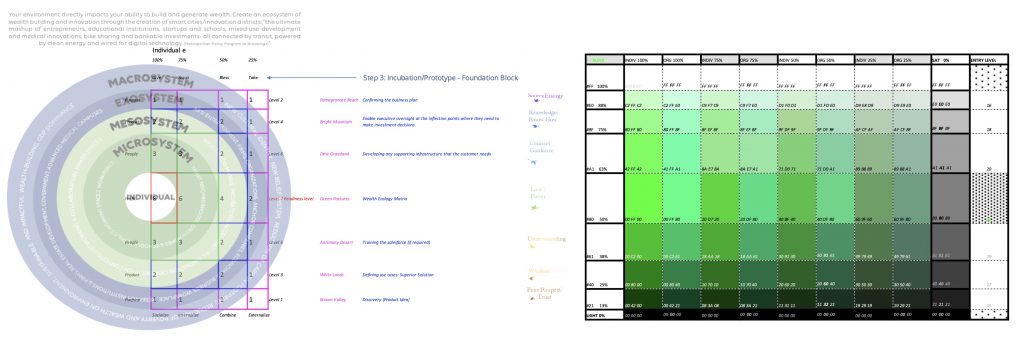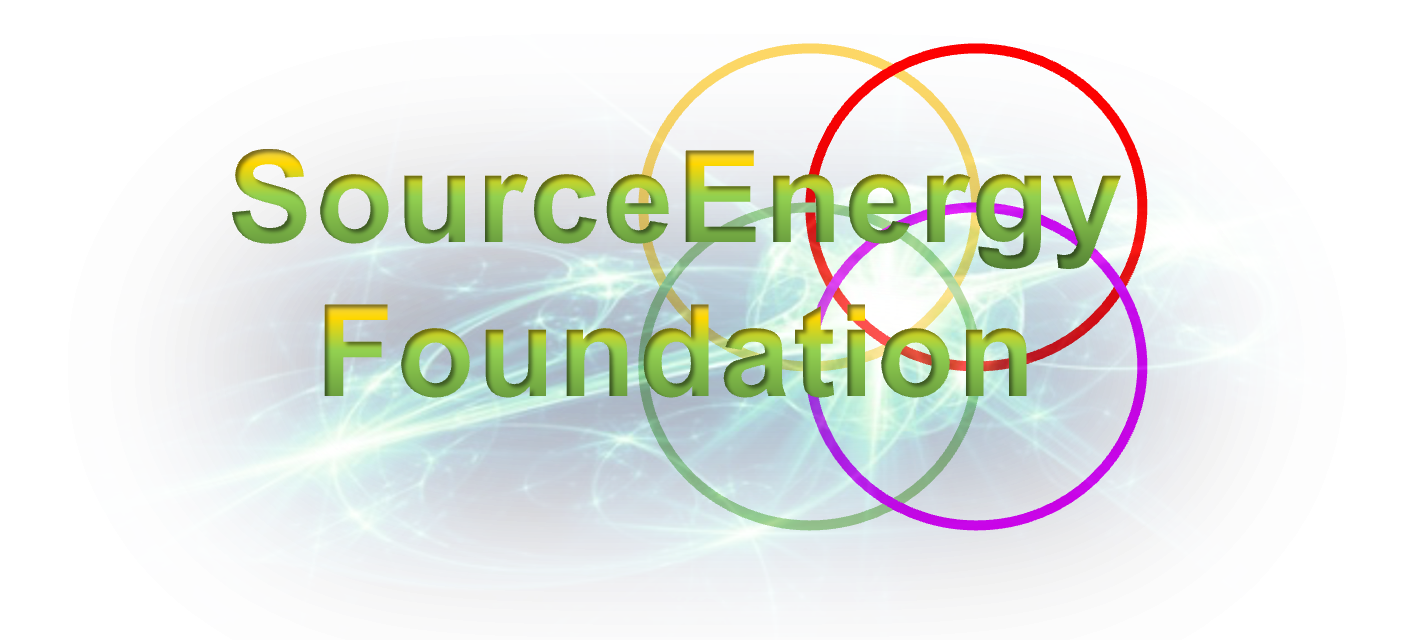F-Block

An Analysis of the Wealth Ecology Model
Dr. Oliver Jones, the graphical representation you’ve provided highlights the conceptual intricacies of the Wealth Ecology Model. At its core, it seems to be rooted in the idea that an individual’s environment, whether macro, meso, or micro, has significant influence on their ability to innovate, grow, and prosper. Let me dive deep into the model’s components and their connections:
1. Environmental Layers:
- Macro System: This is the broadest level, incorporating global, national, and regional influences. Elements like geopolitical structures, international trade laws, and global market trends likely fall under this umbrella. It sets the overarching tone for the environment in which wealth building occurs.
- Meso System: One step narrower, this system could represent state, city, or community influences. Local laws, cultural norms, regional economic drivers, and local resources contribute to the opportunities and constraints an individual faces.
- Micro System: The most direct environment surrounding the individual, it includes immediate factors like family, peers, and personal experiences. It’s the environment where direct interactions take place, and it plays a pivotal role in shaping individual actions.
2. The Central Role of the Individual:
Centered amidst these concentric circles is the individual, influenced by each system layer. The individual’s position indicates the direct and indirect forces acting upon them, ultimately shaping their decisions, behaviors, and ability to generate wealth.
3. Stepwise Process for Wealth Building and Innovation:
The linear representation on the right side of the image seems to denote a step-by-step process. From “Discovery (Product Idea)” to “Training the salesforce (if required)”, it illustrates a journey from ideation to execution. The varying levels—Broom Valley to Green Pastures—perhaps symbolize different stages of business development, with each stage having its challenges and requirements.
4. The Role of Energy and Core Principles:
Throughout the matrix, elements such as “SourceEnergy”, “Knowledge/Know How”, “Counsel/Guidance”, and others suggest that there are fundamental principles or resources necessary at each stage. The percentage values could be indicative of how much of each principle is required for optimal progression. For instance, at the “Discovery” stage, there may be a 100% need for “Energy”, but only a 38% requirement for “Wisdom”.
5. Integration of Technology and Community:
The introductory text underscores the significance of creating smart cities, harnessing clean energy, and utilizing digital technology. These elements reinforce the importance of integrating technological advancements and community-building in the pursuit of wealth and innovation.
Application within the Wealth Ecology Model Framework:
- Energy: The very foundation of any initiative. It’s about the resources, both human and capital, that drive innovation.
- Technology: Instrumental in today’s age, the efficient use and understanding of technology can pave the way for successful ventures, as seen in the emphasis on digital networking.
- Community: Central to the model, it’s about fostering relationships, understanding cultural nuances, and leveraging local resources.
- Education: From understanding the market to the intricacies of business operations, knowledge is key. The Wealth Ecology Model emphasizes continuous learning and adapting, which is essential in a rapidly evolving global landscape.
Implications and Recommendations:
- Holistic Development: Stakeholders, whether individuals or organizations, need to understand and navigate all three environmental layers (Macro, Meso, and Micro) to achieve sustainable growth.
- Emphasize Community Integration: While global trends are significant, the meso and micro environments have a direct impact. Collaborating with local communities, understanding their needs, and tailoring solutions will likely yield better results.
- Continuous Education: As the market evolves, so should the strategies. Regular training sessions, workshops, and seminars can keep individuals and organizations updated.
- Harnessing Technology: In the age of digitization, it’s paramount to integrate the latest technologies. Whether it’s for data analysis, communication, or operations, technology can streamline processes and enhance efficiency.
- Evaluate and Re-Evaluate: The percentages associated with each principle in the matrix suggest that needs change over time. Regular evaluations can ensure that resources are allocated efficiently, optimizing the journey from ideation to execution.
Conclusion:
The Wealth Ecology Model is a comprehensive framework that underscores the intricate relationship between an individual and their environment. It offers a structured approach to wealth building and innovation by emphasizing the importance of understanding and adapting to various environmental layers. With its focus on energy, technology, community, and education, the model provides a roadmap for holistic development in today’s complex world.
To fully harness the potential of the Wealth Ecology Model, stakeholders must be proactive, adaptive, and willing to embrace change. The model not only offers insights but also serves as a reminder of the interconnected nature of our world, urging us to adopt a global perspective while appreciating local nuances.
SourceEnergy Group R&D.
